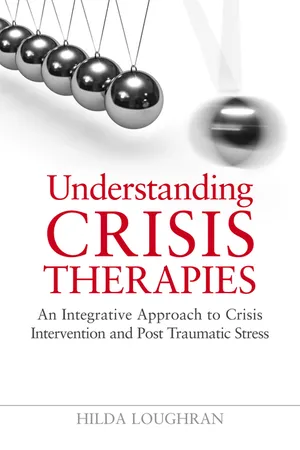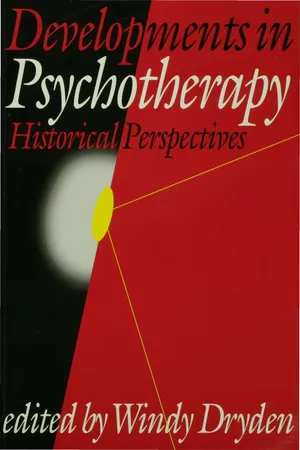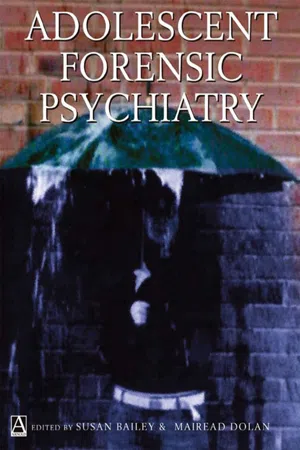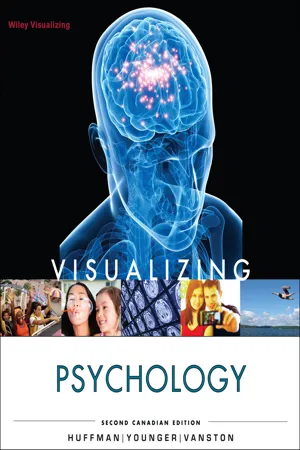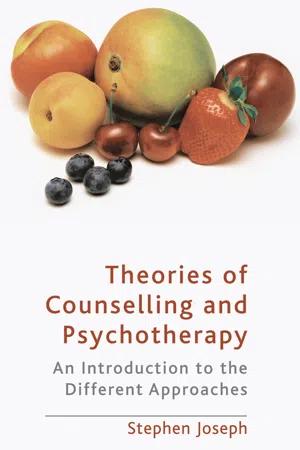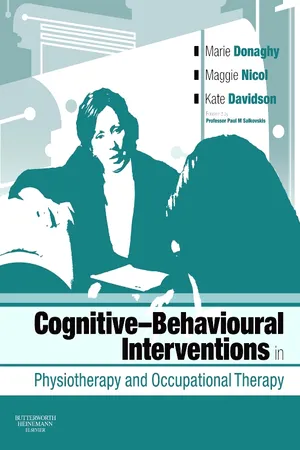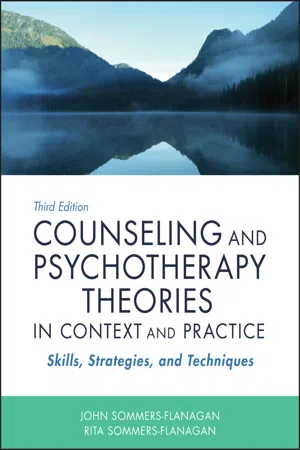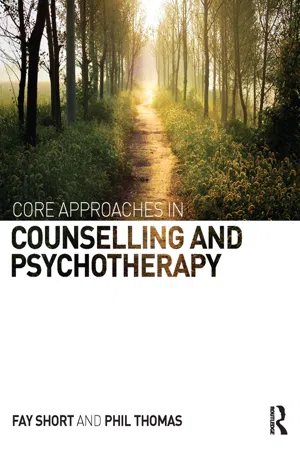Psychology
Behavioural Therapy
Behavioral therapy is a type of psychotherapy that focuses on changing maladaptive behaviors through techniques such as conditioning, reinforcement, and modeling. It is based on the principles of behaviorism and aims to address specific problems by modifying observable actions and reactions. This approach often involves setting goals, creating behavior plans, and using techniques like exposure therapy and systematic desensitization.
Written by Perlego with AI-assistance
Related key terms
1 of 5
11 Key excerpts on "Behavioural Therapy"
- eBook - PDF
- Nancy Ogden, Michael Boyes, Evelyn Field, Ronald Comer, Elizabeth Gould(Authors)
- 2021(Publication Date)
- Wiley(Publisher)
As you may recall from Chapter 15, behaviourists contend that the symp- toms of a psychological disorder are learned behaviours acquired through the same conditioning processes that produce normal behaviours (Stad- don, 2014). The goal of Behavioural Therapy is to identify the client’s specific problem-causing behaviours and to replace them with more adaptive behav- iours. The therapist’s attitude toward the client is that of a teacher, rather than a healer. Behavioural techniques fall into three categories: classical con- ditioning, operant conditioning, and modelling. Classical Conditioning Techniques Classical conditioning treatments are intended to change clients’ dysfunc- tional reactions to stimuli. One treatment, described in Chapter 7, is systematic desensitization. This step-by-step process is aimed at teaching people with phobias to react with calm instead of fear to the objects or situations they dread (Fishman, Rego, & Muller, 2011; Wolpe, 1997a, 1997b, 1995, 1990). Cli- ents first are trained in deep-muscle relaxation, through deep breathing, calming mental imagery, and systematic tensing and releasing of muscles. Next, they construct a fear hierarchy in which they list objects or situations associated with their phobia, starting with the least feared and ending with the most feared. For a client with a phobia of elevators, for example, looking at an elevator on the outside of a building a block away might be low on the fear hierarchy; watching the elevator doors close while inside the elevator might be near the top (see Figure 16.3). Finally, either in imagination or phys- ically, clients confront each item on the hierarchy while they are in a state of deep relaxation, starting with the least fearful and then moving on up the list. - eBook - ePub
Understanding Crisis Therapies
An Integrative Approach to Crisis Intervention and Post Traumatic Stress
- Hilda Loughran(Author)
- 2011(Publication Date)
- Jessica Kingsley Publishers(Publisher)
Murdock and Barker (1991) in considering behaviour therapy comment that ‘there are well-understood principles, a wide body of well-established facts, and theories about particular aspects of learning and behaviour based on sound research, but there is no single theory’ (p.6). Behaviour therapy drawing on these principles of behaviour and learning theories designs interventions to facilitate behaviour change. The fact that behaviour theory is not a single unifying theory may explain in part why it has expanded and incorporated other ideas and is today more usually associated with a more comprehensive cognitive behavioural approach. For the purposes of this chapter however we will focus on the key ideas attributable to behaviour theory.Behaviour therapy then involves identifying patterns of behaviour that already exist and making an assessment regarding whether the repertoire of behaviour is sufficient to meet the needs of the client in his current situation. It may be that current behaviour is causing problems and the client will need help to change his behaviour, it may be that the behaviour required is not familiar to the client and he needs help to learn a completely new way of behaving, or it may be that the client has some of the behaviour/skills required but needs to learn how to apply them to a new situation. As we discussed in the introduction this is a continuum of change behaviour so it may involve restoration to previous behaviour, augmentation to current patterns of behaviour or transformation. There are a number of mechanisms employed in this behavioural approach. Eisler and Hersen (1973) applying behavioural theory to crisis discuss a number of useful behavioural techniques such as modelling, behavioural rehearsal and problem solving. We will look at a few central techniques.Behaviour modification
This involves finding out about the pattern of problem behaviour, in particular understanding the mechanisms at play that reinforce the problem behaviour. The goal then is to modify the problem behaviour by ‘retraining’ the client. Through employing conditioning and observational learning techniques the behaviour is relearned. What has been contentious about this approach has been disagreement as to whether such change in behaviour can be achieved without the client necessarily knowing or understanding the change that is being implemented. In other words the question is first, is it really possible to change another’s behaviour by using conditioning techniques while not elucidating the procedure to the client? Second even if it were possible to change someone without him understanding about the change would that in any situation be ethical? - eBook - PDF
Developments in Psychotherapy
Historical Perspectives
- Windy Dryden(Author)
- 1996(Publication Date)
- SAGE Publications Ltd(Publisher)
Therapy is also eclectic, drawing on many techniques, challeng-ing of orthodoxy, humanistic (since it seeks to assert the individuality of clients' experiences and difficulties, rather than to ascribe to them mental 'illnesses ' which different iate them from the rest of the population), pragmatic, and driven princ ipally by technique rather than relationsh ip. Although behaviour therapy is an amalgam of many techniques and approaches, it is possible to describe typical elements of therapy sessions. Assessment is separated from treatmen t and emphasizes an examinat ion of those particular elements of individuals' experiences and behaviour which contribu te to their difficult ies, typically through a process of functional analysis, which examines conditioning and other learning processes oper-ating in the person's life. The therapist's formulation of the client's difficult ies is shared with him, and the client is didact ically oriented to the behavioural approach. In treatment, specific techniques may be taught and practised, which princ ipally seek to alter the person's condition ing oppor-tuni ties, and thus his behaviours. Problematic behaviours are always the direct focus of trea tmen t, and lit tle discussion of underlying causes will take place. Most behaviour therapis ts minimize or deny the importance of such assumed causes, or even assert that the very notion of cause and symptom is an inappropriate analogy from medical models of psychological distress. There are both theore tical reasons and empir ical support for this contention. Since behavioural theorists argue tha t the laws of condit ioning apply to both adaptive and maladaptive behaviour, there is no logic in describing maladaptive behaviour as a disease-like process. - eBook - PDF
- Susan Bailey, Mairead Dolan(Authors)
- 2004(Publication Date)
- CRC Press(Publisher)
For example, behavioural 266 Cognitive–behavioural therapies approaches to depression help the individual to structure a daily routine in an effort to trigger behaviours that will be positively reinforced (Fennell 1989). Rewards for achieving specific behavioural targets may take the form of approval, access to desired activities, or points or tokens which can be used to gain access to such activities or purchase material goods. Behavioural contracts may also be used, whereby the individual agrees to behave in certain ways and receives rewards for doing so (DeRisi and Butz 1975). Behavioural modification approaches have been used in the treatment of aggressive adolescents (Varley 1984), and in residential settings, where there is greater control over the environment (Cullen and Seddon 1981; Milan 1987). The term ‘behaviour therapy’ is also used, although use of this term tends to be restricted to individualized behavioural interventions focused on improving behav-ioural competence and performance – for example, help-ing someone to become less anxious by teaching them how to relax, or how to be more assertive by teaching assertiveness skills. Cognitive theory Although behavioural practitioners do not deny the existence of an inner psychological world of thought and feeling, there has been considerable debate about the influ-ence of these factors in determining behaviour (Blackman 1981). This debate has been central to the development of CBTs. Traditionally, many behavioural practitioners considered the inner psychological world to be less impor-tant than external events in determining behaviour, and therefore focused their interventions on external factors (Jones et al. 1977). Thus, whilst counselling a young male offender to help him to develop a positive self-image may be useful and desirable, it could be argued that a more powerful intervention would be to teach him social and personal skills that evoke positive responses from other people. - eBook - PDF
- Karen R. Huffman, Alastair Younger, Claire Vanston(Authors)
- 2013(Publication Date)
- Wiley(Publisher)
family therapy Treatment to change maladaptive interaction patterns within a family. Jean Gill/iStockphoto Behaviour Therapies 395 Behaviour Therapies LEARNING OBJECTIVES 1. Identify a key difference between these two classical conditioning techniques: systematic desensitization and aversion therapy. 2. Explore how operant conditioning can be used in therapy. 3. Summarize how modelling therapy works. ometimes having in- sight into a problem does not automati- cally solve it. In be- haviour therapy, the focus is on the problem behaviour itself, rath- er than on any underlying causes. Although the person’s feelings and interpretations are not disregarded, they are just not emphasized. The therapist diagnoses the problem by listing the maladaptive behav- iours that occur and the adaptive behaviours that are ab- sent. The therapist then attempts to shift the balance of the two, drawing on the principles of classical conditioning, op- erant conditioning, and observational learning (Chapter 6). Classical Conditioning Techniques Behaviour therapists use the principles of classical con- ditioning to decrease maladaptive behaviours by creating new associations to replace the faulty ones. We will ex- plore two techniques based on these principles: systematic desensitization and aversion therapy. Systematic desensitization is a widely used behav- ioural approach for the treatment of phobias (Wolpe & Plaud, 1997). The theoretical premise behind this ap- proach is that phobias are emotional responses that have been classically conditioned to certain environmental stimuli (Chapter 6). For example, the emotional response associated with a terrifying automobile accident may be- come conditioned to sitting in the driver’s seat of a car (a previously neutral stimulus). The person then experiences terror simply upon sitting behind the wheel (Kowalski & Westen, 2011). - eBook - ePub
Theories of Counselling and Psychotherapy
An Introduction to the Different Approaches
- Stephen Joseph(Author)
- 2010(Publication Date)
- Bloomsbury Academic(Publisher)
behavioural analysis . The therapist endeavours to describe the client’s maladaptive responses in objective terms and to generate hypotheses about the behavioural and environmental factors that are controlling and maintaining those behaviours. On the basis of the behavioural analysis, the therapist proceeds to design a treatment programme which will consist of manipulating the controlling and maintaining factors in such a way as to modify the maladaptive responses. In classical conditioning, as we have seen, behaviours are controlled by stimuli that come before the response, and in operant conditioning behaviours are controlled by stimuli which come after the response. Based on these theories, behaviourists have attempted to explain a variety of psychological problems.A classic example of behaviour therapy is that used by Mowrer and Mowrer (1938) to treat children with bed-wetting problems. Using the principles of classical conditioning, Mowrer and Mowrer developed the ‘bell and pad’ method to treat nocturnal enuresis. It was hypothesized that nocturnal enuresis resulted from the child not associating a full bladder with waking up, so Mowrer and Mowrer developed a moisture sensitive blanket which triggered an alarm bell when urination took place. Thus, over time, the child came to associate having a full bladder with waking up.As we will see, however, behaviour therapies seem most applicable to anxiety-related problems. First, let us look at some of the specific therapeutic techniques which have been developed on the basis of learning theory, notably, systematic desensitization, flooding, aversion, and modelling. These techniques are based on the principle of classical conditioning. The principle of exposure to the feared or threatening situation, either in imagination or in reality, is the theme that runs throughout these behavioural approaches. - Marie Donaghy, Maggie Nicol, Kate M. Davidson(Authors)
- 2008(Publication Date)
- Butterworth-Heinemann(Publisher)
Figure 1.1 Figure 1.1 • 5 Cognitive–Behavioural Therapy: origins and developments negative reinforcer might be, for example, something with a sour taste, anxiety or some form of punishment. Table 1.1 illustrates how behaviour is reinforced in operant conditioning. In operant conditioning, a feared response, such as avoidance, will be reinforced as it reduces anxiety. If avoidance is repeated, and as a consequence anxiety is repeatedly reduced, the learnt behaviour becomes established. In behaviour therapy, the feared response has to be ‘unlearnt’. Although early behaviour therapy applied learning theory and conditioning to patients’ problems, its origins were in the laboratory with animal research. Only observable phenomena were considered important in understanding behaviour. Thoughts and emotions were considered as unnecessary to understanding behav- iour. Behaviour therapists themselves began to revise their models and included a role for cognitive factors in understanding behaviour (Homme 1965). Around the same time as Beck was observing patients and developing his cognitive theory of emotional disorders, Albert Ellis was developing rational emotive therapy (RET), a therapy that corrects faulty thinking and processing of information to maximize rational thinking (Ellis 1962). Both Beck and Ellis included behavioural exercises in their therapies in the developing cognitive therapies, thereby acknowledging the value of behaviour therapy. Although large numbers of people began to benefit from the new behavioural therapies, particularly for anxiety states, little progress was made in the treatment of depression until the emergence of cognitive therapy (Rachman 1997).- eBook - PDF
- Ronald Comer, Elizabeth Gould, Adrian Furnham(Authors)
- 2014(Publication Date)
- Wiley(Publisher)
Pro- grammes of this sort are called token economy programmes. Behavioural techniques based on operant condition- ing have also been useful for depression (Lazzari et al., token economy an operant conditioning therapy programme in which partici- pants receive tokens (that can be traded for rewards) when they display desired behaviours. 2011). Recall from Chapter 19 that depression is often associated with a decline in rewarding activities and with- drawal. Behaviour therapists may analyse the behaviour of such individuals to identify activities they respond to and use these to increase their participation in rewarding activities. Modelling Techniques Modelling therapy was introduced by the pioneering work of social learning theorist Albert Bandura (1977, 1969). In this, therapists demonstrate appropriate behaviour for clients. Then the clients, through a process of imitation and vicarious reward, begin to initiate the behaviour in their own lives. This procedure has been used to treat phobias, where thera- pists repeatedly display calm emotions while confronting objects that are feared by phobic clients. In this way, many clients are able to overcome their phobias (Rosenthal & Bandura, 1978; Bandura et al., 1977). Behavioural therapists have also used modelling to help people acquire or improve their social skills and assertive- ness. In an approach called social skills training , for example, therapists point out the social deficits of clients and then role-play social situations with the clients, typically modelling more appropriate social behaviours for them. Ultimately, the clients practise the behaviours in real-life situations. In the role-playing session in the ‘Acquir- ing the Social Touch’ box below, the client is a male univer- sity student who has difficulty making dates with women. social skills train- ing Behavioural Therapy technique in which therapists serve as models and teachers to help clients acquire desired social behaviours. - eBook - PDF
Counseling and Psychotherapy Theories in Context and Practice
Skills, Strategies, and Techniques
- John Sommers-Flanagan, Rita Sommers-Flanagan(Authors)
- 2018(Publication Date)
- Wiley(Publisher)
Either classical or operant conditioning can explain successful outcomes associated with assertiveness train-ing. For example, Wolpe would have considered asser-tive behavior as incompatible with anxiety; when anxiety is counterconditioned, assertive behavior may emerge (Wolpe, 1973). In contrast, contemporary assertiveness trainers usually focus more on operant conditioning contingencies—reinforcements and punishments—that establish and maintain passive, aggressive, and assertive social behavior (Alberti & Emmons, 2017). As a means of better understanding client psychopa-thology, behaviorists apply scientific methods to clinical or counseling settings. Behaviorists systematically: • Observe and assess client maladaptive or unskilled be-haviors. • Develop hypotheses about the cause, maintenance, and treatment for maladaptive or unskilled behaviors. • Test behavioral hypotheses with empirically supported interventions. • Observe and evaluate the results of their intervention. • Revise and continue testing new hypotheses about how to modify maladaptive or unskilled behavior(s) as needed. Behaviorists are on the cutting edge when it comes to applying specific treatment procedures to specific clinical problems. More than any other practitioner group, behav-ior (and cognitive behavior) therapists insist on empirical support for their treatment methods. Consequently, most empirically supported treatments (ESTs) are behavioral or cognitive behavioral (Chambless et al., 1998, 2006). THE PRACTICE OF BEHAVIOR THERAPY When preparing to do behavior therapy, be sure to get out your clipboard, because behavior therapists take notes, think like scientists, and act like educators. You may even need graph paper or a white board for illustrating concepts to clients. Your job is to help cli-ents unlearn old, maladaptive behaviors and learn new, adaptive behaviors. A sample excerpt from a behavioral informed consent is in Putting It in Practice 7.1. - eBook - ePub
- Fay Short, Phil Thomas(Authors)
- 2014(Publication Date)
- Routledge(Publisher)
Focus on behaviour: advantages of behaviourism, no mind-reading, unclear relationships between behaviour and cognition and emotion; arguably, cognition and emotion are behavioursTherapeutic psychoeducation: passive and active psychoeducation can aid the collaboration between the client (student) and the therapist (neither expert nor novice); educational process provides client with tools to address future problems and achieve independence without the constant support of a therapistTHERAPEUTIC TECHNIQUES IN BEHAVIOUR THERAPY
LEARNING OUTCOMES After reading this section, you will be able to:• discuss exposure techniques, such as systematic desensitisation and flooding• discuss contingency management techniques, such as time out and token economy• describe and evaluate behavioural change programmes, such as personal and social skills programmes and the Nudge programmeExposure therapy techniques
Reconditioning
Client is exposed to the fear-inducing stimulus in order to extinguish previous unhealthy associations and establish new healthy associations (Abramowitz et al., 2010) Unhealthy associations can be extinguished Exposure to the associated stimulus without the negative consequences will lead to extinction of the conditioned response Client who has been conditioned to fear dogs because of an early experience associating a dog (neutral stimulus) and a bite (unconditioned stimulus will automatically inspire fear) Client might have this conditioned response of fear of dogs extinguished if he experiences the association between a dog (conditioned stimulus) and no bite (extinction of the association) - eBook - PDF
Cognitive-Behavioural Therapy in the Treatment of Addiction
A Treatment Planner for Clinicians
- Christos Kouimtsidis, Paul Davis, Martine Reynolds, Colin Drummond, Nicholas Tarrier(Authors)
- 2007(Publication Date)
- Wiley-Interscience(Publisher)
Cognitive approaches pri-marily aim to change addictive behaviour through changes in faulty cognitions (e.g. dysfunctional beliefs) that serve to maintain the behaviour, or through the promo-tion of positive cognitions (e.g. self-efficacy) or motivation to change behaviour (Beck et al. , 1993). Commonly used approaches are cognitive therapy, relapse prevention and motivational enhancement therapy. Behavioural approaches primarily aim to modify behaviours underpinned by conditioned learning: classical and operant con-ditioning. Such approaches are many and varied, but include interventions aimed at extinguishing classically conditioned responding (e.g. cue exposure and response prevention), or are based on instrumental conditioning (e.g. community reinforce-ment or contingency management) in which positive non-drug taking behaviours are positively reinforced. Behavioural approaches involving aversive conditioning are historically important mainly in the alcohol treatment field, and have some evidence of efficacy, but are not used mainly for ethical reasons. Psychological interventions that incorporate cognitive and behavioural techniques have been shown to be effective in reducing or maintaining abstinence from most forms of substance misuse in a number of studies, either alone or in conjunction with pharmacological interventions. Psychosocial interventions is a term often ap-plied to therapies that aim to assist substance misuse behaviour change such as CBT and motivational interviewing (MI), therapies which are evidence based and have clear underlying principles (Wanigaratne et al. , 2005). The evidence on the ef-fectiveness of psychosocial interventions that incorporate cognitive and behavioural techniques in several of the main substances of dependence discussed in this chapter is summarized below.
Index pages curate the most relevant extracts from our library of academic textbooks. They’ve been created using an in-house natural language model (NLM), each adding context and meaning to key research topics.

